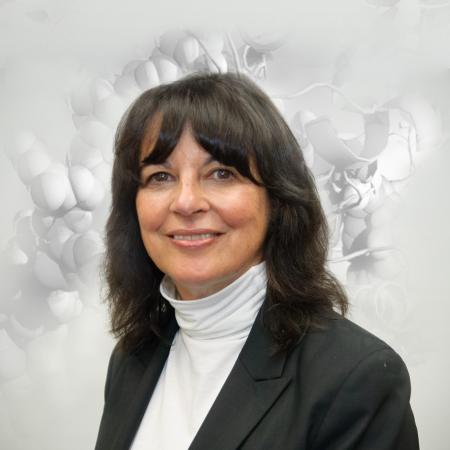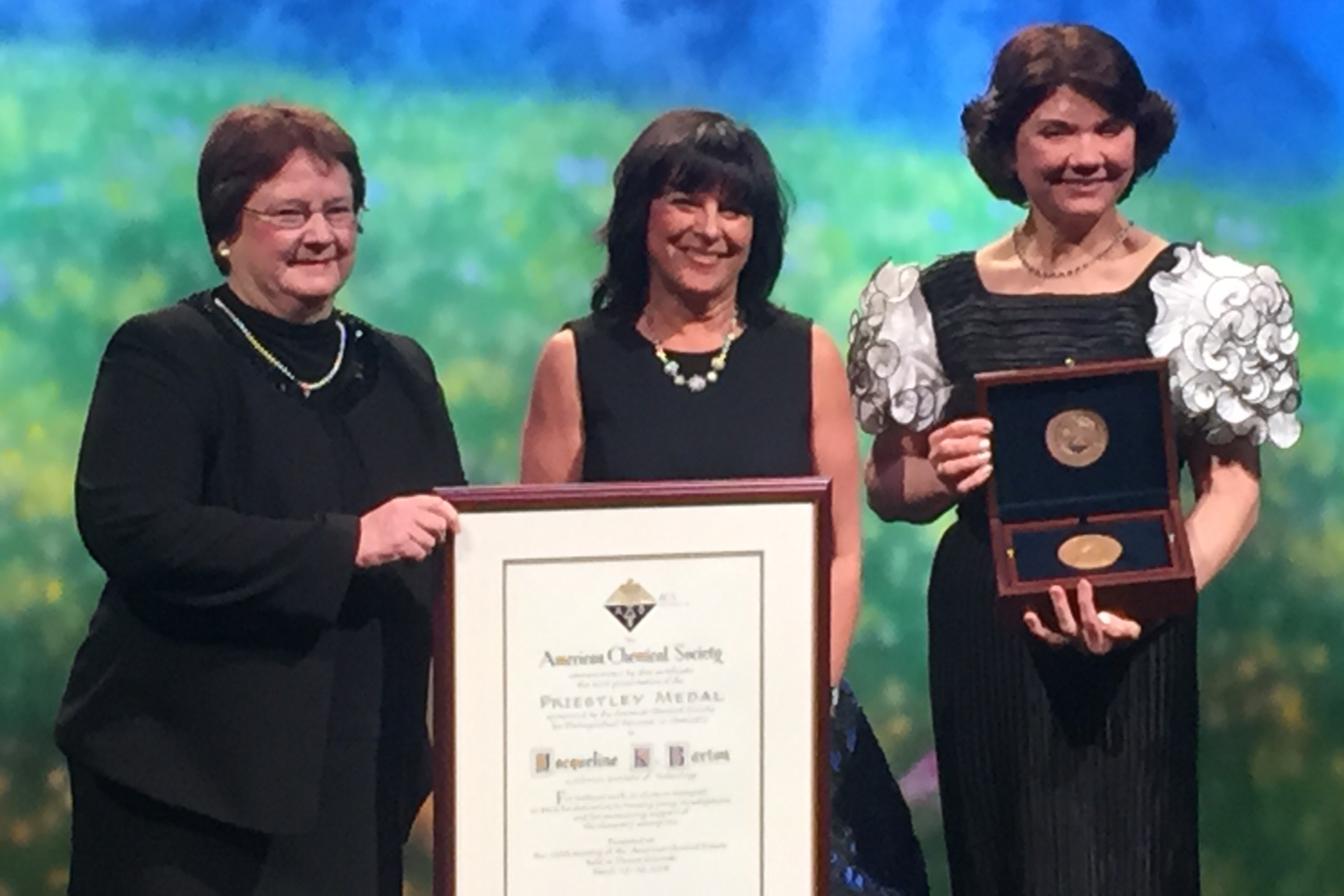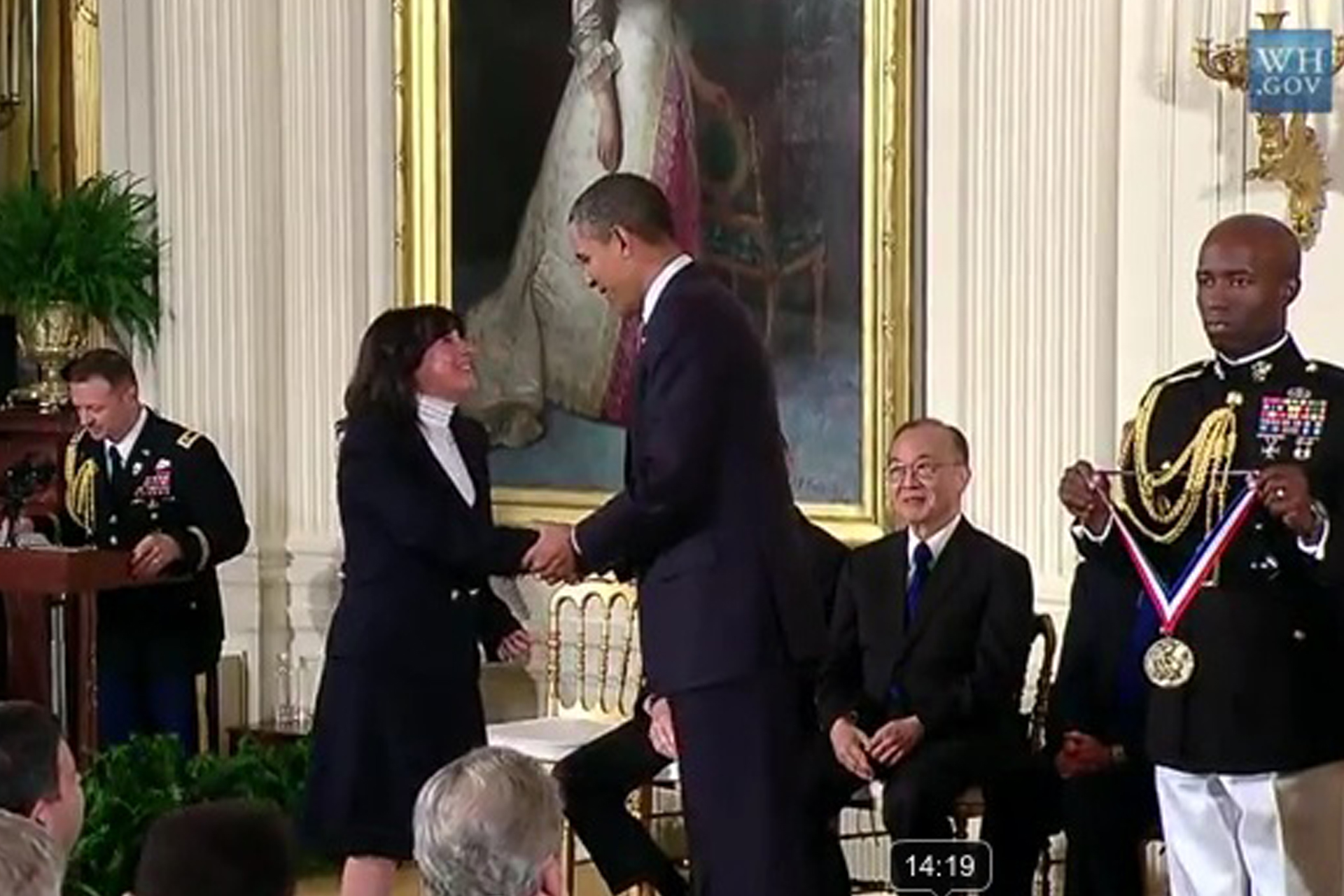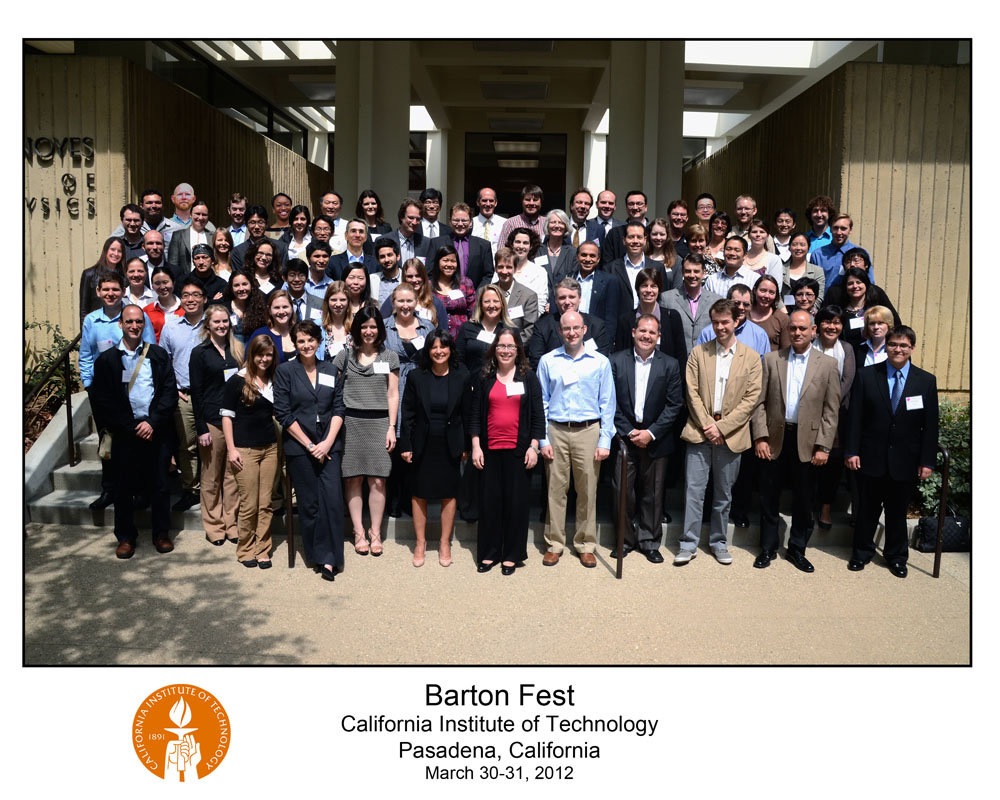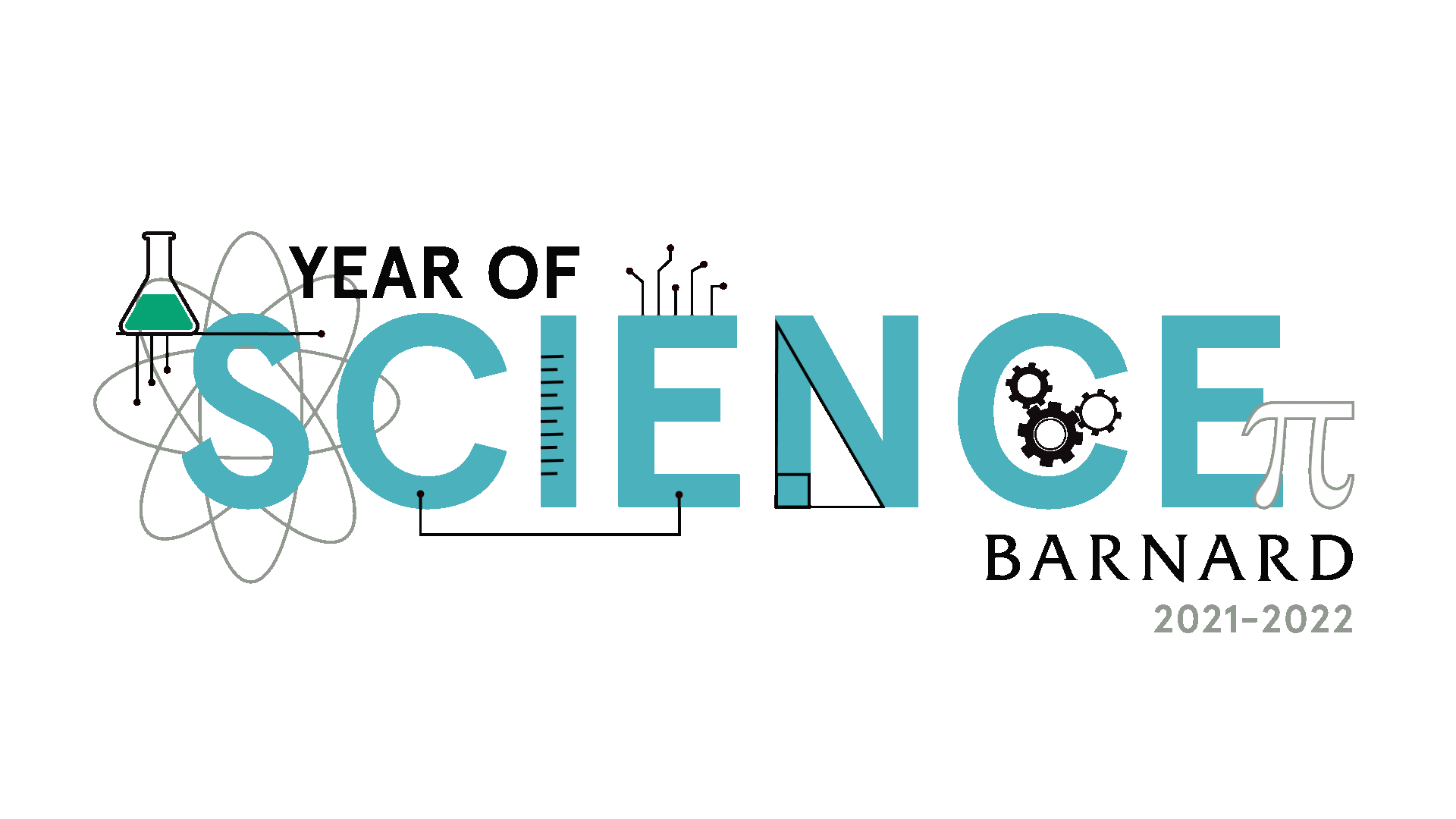Main photo: Jacqueline K. Barton being awarded the Barnard Medal of Distinction, the College’s highest honor, during the 1990 Commencement.
Say “DNA pioneers,” and chemist Jacqueline K. Barton ’74 is often one of the first scientists mentioned. Barton — the John G. Kirkwood and Arthur A. Noyes Professor in the Division of Chemistry and Chemical Engineering at the California Institute of Technology (Caltech) — has greatly influenced how researchers think about DNA today. She proved that DNA can facilitate electron transfer chemistry, and she showed how this chemistry can be used to determine how DNA is damaged and repaired. She also applied transition metal complexes to probe recognition and reactions of double helical DNA, designing chiral metal complexes that can recognize nucleic acid sites similarly to DNA-binding proteins. These discoveries are important to better understanding aging and the creation of novel chemotherapeutics for diseases like cancer.
Barton’s groundbreaking research inevitably resulted in her being recognized with some of the most prestigious honors and prizes in science before she was even 40 years old: At age 35, she became the first woman to win the ACS Award in Pure Chemistry (1988); at age 39, she won the MacArthur “Genius Award” Foundation Fellowship (1991). Over the next two decades, she was awarded the Weizmann Women in Science Award (1998), and President Barack Obama presented her with the National Medal of Science (2011), “the highest honor bestowed upon American scientists and engineers by the president of the United States,” to name a few.
When Barton won the National Medal of Science for her contributions to DNA research, she and her husband, chemist and Caltech professor emeritus Peter Dervan, arguably became the only couple in the United States to share the experience (he won his own medal in 2006). “It was a tremendous honor,” Barton said. “Peter and I were honored for separate work, as we didn’t work together. But our kids were able to go to two National Medal of Science ceremonies, and it was terrific.”
Barton has also been inducted into the National Academy of Sciences, the National Academy of Medicine, the American Philosophical Society, and the American Academy of Arts and Sciences. She was awarded the Priestley Medal in 2015 — the highest award of the American Chemical Society — and the National Academy of Sciences Award in Chemical Sciences in 2019.
Fun fact:
Before Barnard, Barton attended an all-girl’s high school in the Bronx but did not study chemistry while there. “Chemistry became my passion when I went to Barnard, from the moment I took [my first class] and got into a lab,” she said.
Long before Barton became a world-renowned chemist, the native New Yorker said she chose to attend Barnard largely because of its location. “Barnard had the wonderful characteristic that it was in the city, [whereas] a lot of the other [women’s-only colleges] were sort of out in the country somewhere,” Barton said, via a Zoom call. “At the time, Columbia was not co-ed, and Barnard was the place to be if you wanted the college experience, [along with having] total access to the university experience on the other side of Broadway. It was the best of both worlds, and I think that’s still true today.”
After graduating from Barnard, Barton earned a Ph.D. in inorganic chemistry from Columbia in 1978 and returned to the university in 1983 as an assistant professor of chemistry. She became an associate professor of chemistry and biological sciences in 1985 — and the following year, the first woman in Columbia’s chemistry department to receive tenure. Through her research on DNA chemistry, Barton has mentored more than 100 graduate students and postdoctoral students, including fellow alumna and Barnard associate professor of chemistry Marisa C. Buzzeo ’01, who worked in Barton’s laboratory at Caltech as a postdoctoral scholar.
“I like teaching [and initially] wanted to be a high school teacher, then maybe a college teacher, until I decided that what I really loved was research,” Barton said. When she co-founded the 2001 company GeneOhm Sciences, to create new technologies to diagnose and treat diseases by finding mutations in DNA, she was proud to have brought many of her former students in to collaborate with her.
Even though GeneOhm Sciences was sold to global medical device company BD around 2010, Barton has not stopped probing DNA or finding new ways to shoot electrons through them. “My science is my hobby, and I look at it in the same way that artists look at their paintings,” she said. “You may look at films that you make in the same way I think about writing a paper. At the end of the day, I want to reach the point where somebody knows my paper is a ‘Jackie Barton paper' without looking at the authorship. It is very much like your canvas, an expression of you. That sort of creative bent is what makes scientists as creative as artists.”
Barton’s career has inspired many to pursue STEM goals, and her work in DNA continues to deepen researchers’ understanding into how the chemistry of the complex molecule can help save lives.
*This series is produced in collaboration with Obden Mondésir, associate director of the Barnard Archives and Special Collections.
— REPORTED BY ISABELLA PECHATY ’23
